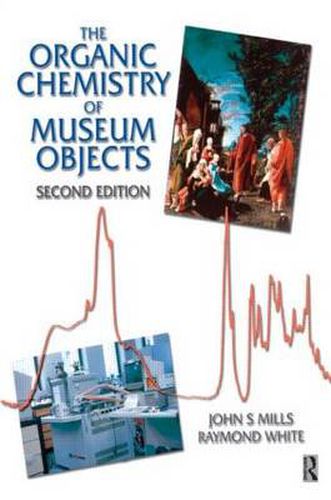Readings Newsletter
Become a Readings Member to make your shopping experience even easier.
Sign in or sign up for free!
You’re not far away from qualifying for FREE standard shipping within Australia
You’ve qualified for FREE standard shipping within Australia
The cart is loading…






‘The Organic Chemistry of Museum Objects’ makes available in a single volume, a survey of the chemical composition, properties and analysis of the whole range of organic materials incorporated into objects and artworks found in museum collections.
The authors cover the fundamental chemistry of the bulk materials such as wood, paper, natural fibres and skin products, as well as that of the relatively minor components incorporated as paint, media, varnishes, adhesives and dyes. This expanded second edition, now in paperback, follows the structure of the first, though it has been extensively updated. In addition to chapters on basic organic chemistry, analytical methods, analytical findings and fundamental aspects of deterioration, the subject matter is grouped as far as possible by broad chemical class - oils and fats, waxes, bitumens, carbohydrates, proteins, natural resins, dyestuffs and synthetic polymers.
This is an essential purchase for all practising and student conservators, restorers, museum scientists, curators and organic chemists.
$9.00 standard shipping within Australia
FREE standard shipping within Australia for orders over $100.00
Express & International shipping calculated at checkout
Stock availability can be subject to change without notice. We recommend calling the shop or contacting our online team to check availability of low stock items. Please see our Shopping Online page for more details.
‘The Organic Chemistry of Museum Objects’ makes available in a single volume, a survey of the chemical composition, properties and analysis of the whole range of organic materials incorporated into objects and artworks found in museum collections.
The authors cover the fundamental chemistry of the bulk materials such as wood, paper, natural fibres and skin products, as well as that of the relatively minor components incorporated as paint, media, varnishes, adhesives and dyes. This expanded second edition, now in paperback, follows the structure of the first, though it has been extensively updated. In addition to chapters on basic organic chemistry, analytical methods, analytical findings and fundamental aspects of deterioration, the subject matter is grouped as far as possible by broad chemical class - oils and fats, waxes, bitumens, carbohydrates, proteins, natural resins, dyestuffs and synthetic polymers.
This is an essential purchase for all practising and student conservators, restorers, museum scientists, curators and organic chemists.